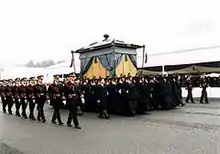 The state funeral procession of Emperor Shōwa | |
| Date |
|
|---|---|
| Location |
|
| Budget | \10 billion |
| Participants | See list |
Hirohito (Emperor Shōwa), the 124th Emperor of Japan according to the traditional order of succession, died on 7 January 1989 at Imperial Palace in Chiyoda, Tokyo, at the age of 87, after suffering from intestinal cancer for some time. He was succeeded by his eldest son, Akihito. The late emperor's state funeral was held on 24 February, when he was buried near his parents, Emperor Taishō and Empress Teimei, at the Musashi Imperial Graveyard in Hachiōji, Tokyo.
Illness and death
On 22 September 1987, the Emperor underwent surgery on his pancreas after having digestive problems for several months. The doctors discovered that he had duodenal cancer. The Emperor appeared to be making a full recovery for several months after the surgery. About a year later, however, on 19 September 1988, he collapsed in his palace, and his health worsened over the next several months as he suffered from continuous internal bleeding.
On 7 January 1989, at 7:55 am, the Grand Steward of Japan's Imperial Household Agency, Shōichi Fujimori, officially announced the death of Emperor Shōwa at 6:33 am, and revealed details about his cancer for the first time. He was survived by his wife, five children, ten grandchildren and one great-grandchild.[1]
Succession and posthumous title
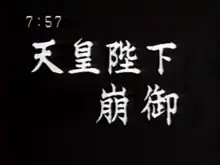
Emperor Shōwa's death ended the Shōwa era. He was succeeded by his son, Crown Prince Akihito. With Emperor Akihito's accession, a new era began: the Heisei era, effective at midnight the day after Emperor Shōwa's death. The new Emperor's formal enthronement ceremony was held in Tokyo on 12 November 1990.
From 7 January until 31 January 1989, the late Emperor's formal appellation was Taikō Tennō (大行天皇, "Departed Emperor"). The late Emperor's definitive posthumous name, Shōwa Tennō (昭和天皇), was officially determined on 13 January and formally released on 31 January by Noboru Takeshita, the Prime Minister.
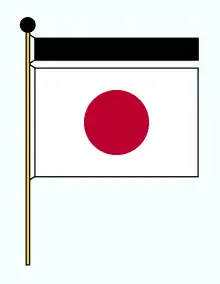
State funeral
On Friday, 24 February Emperor Shōwa's state funeral was held, and unlike that of his predecessor, although formal it was not conducted in a strictly Shinto manner.[2] It was a funeral carefully designed both as a tribute to the late Emperor and as a showcase for the peaceful, affluent society into which Japan had developed during his reign.[3]
Unlike Emperor Taishō's funeral 62 years earlier, there was no ceremonious parade of officials dressed in military uniforms, and there were far fewer of the Shinto rituals used at that time to glorify the Emperor as a near-deity. These changes were meant to highlight that the Emperor Shōwa's funeral would be the first of an emperor under the postwar democratic Constitution, and the first imperial funeral held in daylight.[3]
The delay of 48 days between his death and the funeral was about the same as that for the previous Emperor, and allowed time for numerous ceremonies leading up to the funeral.[3] The late Emperor's body lay in three coffins; some personal items such as books and stationery were also placed into them.
Ceremony at the Imperial Palace
The ceremonies began at 7:30 a.m. when Emperor Akihito conducted a private Ceremony of Farewell for his father in the Imperial Palace.[2]
Funeral procession through Tokyo
At 9:35 a.m., a black motor hearse carrying the body of Emperor Shōwa left the Imperial Palace for the two-mile-long drive to the Shinjuku Gyoen Garden, where the Shinto and state ceremonies were held.[2] The hearse was accompanied by traditional music played on the shō, a Japanese free reed aerophane; the crowd was largely silent as the hearse bearing the Emperor's coffin drove over a stone bridge and out through the Imperial Palace gates. A brass band played a dirge composed for the funeral of Emperor Shōwa's great-grandmother in the late 19th century, and cannon shots were fired in accompaniment.[3]
The motor hearse was accompanied by a procession of 60 cars. The route of the cortege through Tokyo was lined by an estimated 800,000 spectators and 32,000 special police, who had been mobilized to guard against potential terrorist attacks.[2]
The path of the funeral procession passed the National Diet, the democratic core of modern Japan, and the National Stadium, where the emperor opened the 1964 Summer Olympics and heralded Japan's postwar re-emergence.[2]
Ceremonies at Shinjuku Gyoen Garden
The 40-minute procession, accompanied by a brass band, ended when it pulled into the Shinjuku Gyoen Garden, until 1949 reserved for the use of the Imperial family and now one of Tokyo's most popular parks.[3]
At the Shinjuku Gyoen Garden, the funeral ceremonies for Emperor Shōwa were conducted in a Sojoden, a specially constructed funeral hall. The funeral hall was constructed of Japanese cypress and held together with bamboo nails, in keeping with ancient imperial tradition.[2]
The official guests were seated in two white tents located in front of the funeral hall. Because of the low temperatures, many guests used chemical hand-warmers and wool blankets to keep warm as the three-hour Shinto and state ceremonies progressed.[2]
Palanquin procession
Emperor Shōwa's coffin was transferred into a palanquin made of cypress wood painted with black lacquer. Attendants wearing sokutai and bearing white and yellow banners, shields and signs of the sun and moon, led a 225-member procession as musicians played traditional court music (gagaku). Next came gray-robed attendants carrying two sacred sakaki trees draped with cloth streamers and ceremonial boxes of food and silk cloths to be offered to the spirit of the late Emperor.[3]
In a nine-minute procession, 51 members of the Imperial Household Agency, clad in traditional gray Shinto clothing, carried the 1.5 ton Sokaren (Imperial Palanquin) containing the three-layered coffin of the Emperor Shōwa into the funeral hall, as they walked up the aisle between the white tents with domestic and foreign dignitaries.[2][3]
Behind the coffin walked a chamberlain dressed in white, who carried a platter with a pair of white shoes, as it is traditionally held that the deceased Emperor would wear them to heaven.[2] The new Emperor, Akihito, and the Empress Michiko, carrying their own large umbrellas, followed the palanquin with other family members.[3]
The procession passed through a small wooden torii gate, the Shinto symbol marking the entrance to sacred space, and filed into the Sojoden.[3]
Shinto ceremony
The events in the Sojoden were divided into a religious Sojoden no Gi ceremony, followed by the state Taiso no Rei ceremony.[2]
When the procession entered the funeral hall, the Shinto portion of the funeral began and a black curtain partition was drawn closed. It opened to reveal a centuries-old ceremony. To the accompaniment of chanting, officials approached the altar of the Emperor, holding aloft wooden trays of sea bream, wild birds, kelp, seaweed, mountain potatoes, melons and other delicacies. The foods, as well as silk cloths, were offered to the spirit of the late Emperor.
The chief of ceremony, a childhood classmate and attendant of Emperor Shōwa, then delivered an address, followed by Emperor Akihito.[3]
The funeral continued as the black curtain closed, signalling the end of the Shinto portion of the funeral.[3]
State ceremony
As the curtain parted again, Japan's Chief Cabinet Secretary opened the state portion of the funeral. At noon, he called for a minute of silence throughout Japan.[3] Prime Minister Takeshita delivered a short eulogy, in which he said that the reign of the late emperor would be remembered for its eventful and tumultuous times, including the Second World War and the eventual reconstruction of Japan.[2] Foreign dignitaries approached the altar one at a time to pay their respects.[3]
Ceremony at the Imperial Graveyard
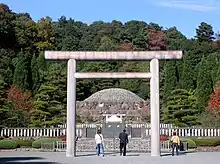
Following the state ceremony, the Emperor Shōwa's coffin was taken to the Musashi Imperial Graveyard in the Hachiōji district of Tokyo for burial. At Emperor Taishō's funeral in 1927, the trip to the Musashi Imperial Graveyard was carried out as a 3-hour procession, but at the Emperor Shōwa's funeral, the trip was made by motor hearse and cut to 40 minutes.[2] Several hours of ceremonies followed there, until the late emperor was laid to rest at nightfall, the traditional time to bury emperors.[3]
Visitors and guests
Summary
An estimated 200,000 people lined the site of the procession – far fewer than the 860,000 that officials had projected.[3] The Emperor Shōwa's funeral was attended by some 10,000 official guests. A total of 163 countries (out of 166 at that time) and 27 international organizations sent representatives to the event. More than 70 world leaders attended the funeral of the Emperor.
In total, there were 53 heads of state, 15 heads of government, 19 deputy heads of state, 17 members of royal families, 43 foreign ministers and other officials present, all of which required placing Tokyo under an unprecedented blanket of security. Because of security concerns for the dignitaries and because of threats from Japanese left-wing extremists to disrupt the funeral, authorities decided to scrap many of the traditional events that normally accompany funerals for Japanese monarchs. Officials also overrode protocol to give US President George H. W. Bush a front-row seat, even though tradition would have put him toward the back, at the fifty fifth seat,[4] because of his short time in office. Bush, who arrived in Tokyo on Thursday afternoon, attended the funeral on Friday afternoon and departed for China on Saturday.[2]
Japanese officials said it was the biggest funeral in modern Japanese history, and the unprecedented turnout of world leaders was recognition of Japan's emergence as an economic superpower. The Emperor Shōwa was the longest-reigning emperor in Japanese history and the last of the major leaders from World War II. Many also viewed the burial of the emperor as the nation's final break with a militaristic past that plunged much of Asia into war in the 1930s.[2] The late emperor's wife, the Empress Dowager Nagako, did not attend the ceremonies due to a lingering back and leg malady.[2]
The event hold records for the largest gathering of international leaders in world history at that time for a state funeral, surpassed the funeral of Josip Broz Tito in 1980. It would stand for the next 16 years until Pope John Paul II's funeral in 2005.
Japanese Imperial Family
- The Emperor and Empress, the late Emperor's son and daughter-in-law
- The Prince Hiro, the late Emperor's grandson
- The Prince Aya, the late Emperor's grandson
- The Princess Nori, the late Emperor's granddaughter
- The Former Princess Yori and Takamasa Ikeda, the late Emperor's daughter and son-in-law
- The Prince and Princess Hitachi, the late Emperor's son and daughter-in-law
- The Former Princess Suga and Hisanaga Shimazu, the late Emperor's daughter and son-in-law
- The Princess Takamatsu, the late Emperor's sister-in-law
- The Prince and Princess Mikasa, the late Emperor's brother and sister-in-law
- Former Princess Yasuko of Mikasa and Tadateru Konoe, the late Emperor's niece and nephew-in-law
- Prince and Princess Tomohito of Mikasa, the late Emperor's nephew and niece-in-law
- Former Princess Masako of Mikasa and Masayuki Sen, the late Emperor's niece and nephew-in-law
- The Prince and Princess Takamado, the late Emperor's nephew and niece-in-law
Absentees
- The Empress Dowager, the late Emperor's widow
- The Former Princess Taka, the late Emperor's daughter
- The Princess Chichibu, the late Emperor's sister-in-law
- The Prince Katsura, the late Emperor's nephew
Foreign dignitaries
The foreign dignitaries who attended the funeral:[5][6]
Members of royal houses
 Sheikh Ali bin Khalifa Al Khalifa (representing the Emir of Bahrain)
Sheikh Ali bin Khalifa Al Khalifa (representing the Emir of Bahrain).svg.png.webp) The King of the Belgians
The King of the Belgians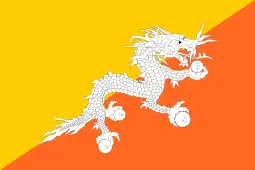 The King of Bhutan
The King of Bhutan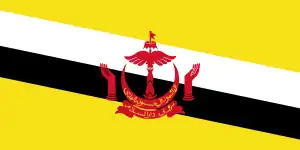 The Sultan of Brunei
The Sultan of Brunei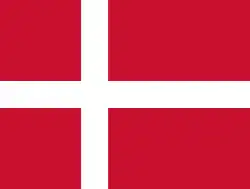 Prince Henrik of Denmark (representing the Queen of Denmark)
Prince Henrik of Denmark (representing the Queen of Denmark)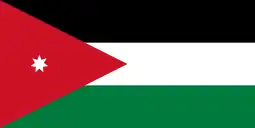 The King of Jordan
The King of Jordan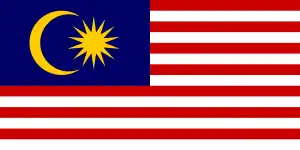 Tuanku Muhriz, prince of the Negeri Sembilan royal family
Tuanku Muhriz, prince of the Negeri Sembilan royal family.svg.png.webp) The King of Lesotho
The King of Lesotho The Crown Prince of Morocco (representing the King of Morocco)
The Crown Prince of Morocco (representing the King of Morocco)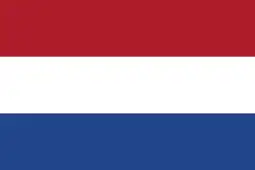 The Queen of the Netherlands
The Queen of the Netherlands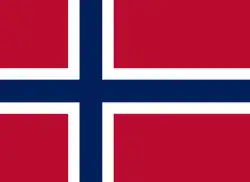 The Crown Prince of Norway (representing the King of Norway)
The Crown Prince of Norway (representing the King of Norway).svg.png.webp) The Sultan of Oman
The Sultan of Oman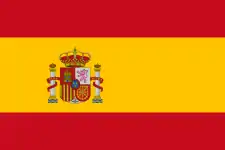 The King and Queen of Spain
The King and Queen of Spain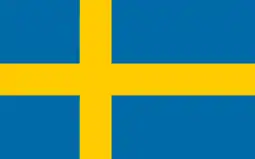 The King and Queen of Sweden
The King and Queen of Sweden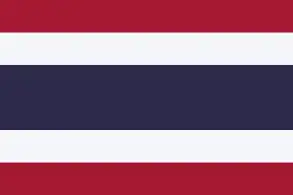 The Crown Prince of Thailand (representing the King of Thailand)
The Crown Prince of Thailand (representing the King of Thailand)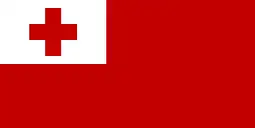 The King and Queen of Tonga
The King and Queen of Tonga The Duke of Edinburgh (representing the Queen of the United Kingdom)
The Duke of Edinburgh (representing the Queen of the United Kingdom)
Head of State
 O le Ao o Samoa, His Highness Susuga Malietoa Tanumafili II
O le Ao o Samoa, His Highness Susuga Malietoa Tanumafili II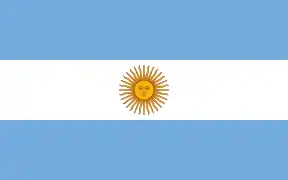 President of Argentina Raul Alfonsin
President of Argentina Raul Alfonsin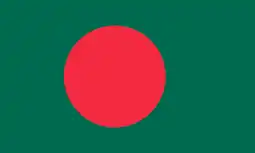 President of Bangladesh Hussain Muhammad Ershad
President of Bangladesh Hussain Muhammad Ershad.svg.png.webp) President of Brazil Jose Sarney
President of Brazil Jose Sarney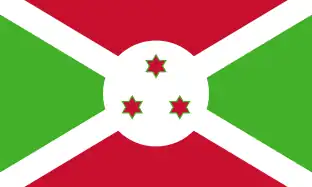 President Pierre Buyoya
President Pierre Buyoya.svg.png.webp) President of Comoros Salim Ben Ali
President of Comoros Salim Ben Ali.svg.png.webp) President of Cyprus George Vassiliou
President of Cyprus George Vassiliou President of Egypt Hosni Mubarak
President of Egypt Hosni Mubarak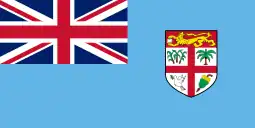 President of Fiji Penaia Ganilau
President of Fiji Penaia Ganilau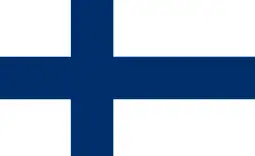 President of Finland Mauno Koivisto
President of Finland Mauno Koivisto President of France François Mitterrand
President of France François Mitterrand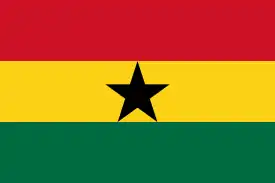 President of Ghana Jerry Rawlings
President of Ghana Jerry Rawlings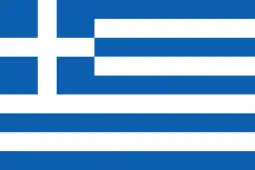 President of Greece Christos Sartzetakis
President of Greece Christos Sartzetakis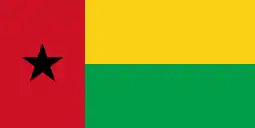 President of the Council of State Joao Bernardo Vieira
President of the Council of State Joao Bernardo Vieira President of Honduras José Azcona del Hoyo
President of Honduras José Azcona del Hoyo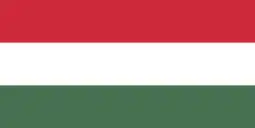 President of Hungary Brunó Ferenc Straub
President of Hungary Brunó Ferenc Straub President of Iceland Vigdis Finnbogadottir
President of Iceland Vigdis Finnbogadottir President of India Ramaswamy Venkataraman
President of India Ramaswamy Venkataraman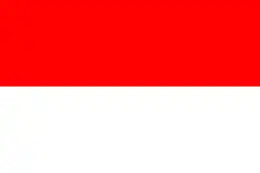 President of Indonesia Suharto
President of Indonesia Suharto President of Ireland Patrick J. Hillery
President of Ireland Patrick J. Hillery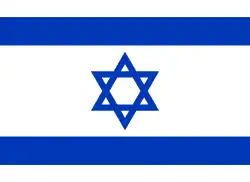 President of Israel Chaim Herzog
President of Israel Chaim Herzog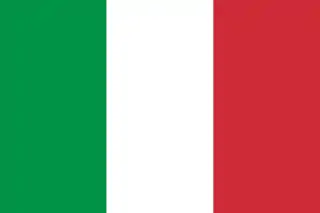 President of Italy Francesco Cossiga
President of Italy Francesco Cossiga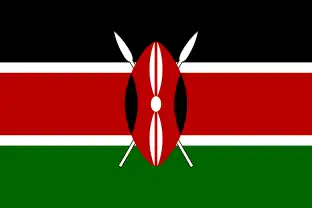 President of Kenya Daniel arap Moi
President of Kenya Daniel arap Moi President of Maldives Maumoon Abdul Gayoom
President of Maldives Maumoon Abdul Gayoom.svg.png.webp) President of Mongolia Jambyn Batmönkh
President of Mongolia Jambyn Batmönkh President of Nigeria Ibrahim Babangida
President of Nigeria Ibrahim Babangida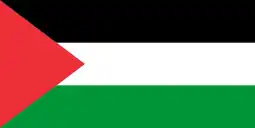 President of Palestine Yasser Arafat
President of Palestine Yasser Arafat.svg.png.webp) President of the Philippines Corazon Aquino
President of the Philippines Corazon Aquino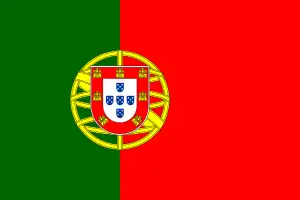 President of Portugal Mário Soares
President of Portugal Mário Soares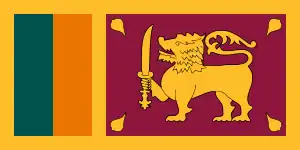 President of Sri Lanka Ranasinghe Premadasa
President of Sri Lanka Ranasinghe Premadasa President of Syria Hafez al-Assad
President of Syria Hafez al-Assad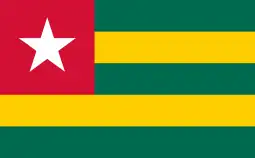 President of Togo Gnassingbe Eyadema
President of Togo Gnassingbe Eyadema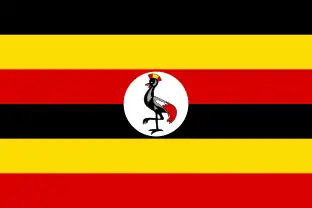 President of Uganda Yoweri Museveni
President of Uganda Yoweri Museveni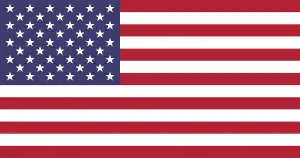 President of the United States George H. W. Bush
President of the United States George H. W. Bush President of Vanuatu Fred Timakata
President of Vanuatu Fred Timakata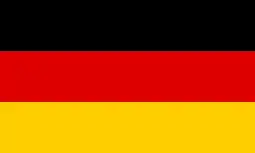 President of West Germany Richard von Weizsäcker
President of West Germany Richard von Weizsäcker.svg.png.webp) President of Zaire Mobutu Sese Seko[7]
President of Zaire Mobutu Sese Seko[7].svg.png.webp) President of Zambia Kenneth Kaunda
President of Zambia Kenneth Kaunda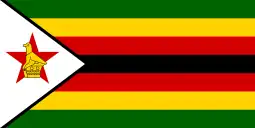 President of Zimbabwe Robert Mugabe
President of Zimbabwe Robert Mugabe
Prime Minister/Vice-President
.svg.png.webp) Prime Minister Wilfried Martens
Prime Minister Wilfried Martens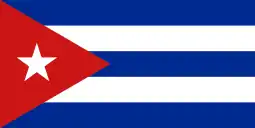 Vice-President of Council of Ministers and Minister of Education José Ramón
Vice-President of Council of Ministers and Minister of Education José Ramón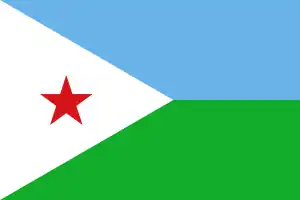 Prime Minister of Djibouti Barkat Gourad Hamadou
Prime Minister of Djibouti Barkat Gourad Hamadou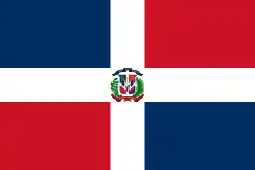 Vice-President Carlos Morales Troncoso
Vice-President Carlos Morales Troncoso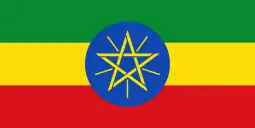 Prime Minister Fikre-Selassie Wogderess
Prime Minister Fikre-Selassie Wogderess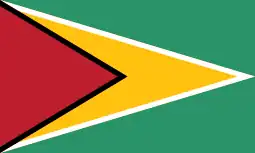 First Vice-President and Prime Minister Hamilton Green
First Vice-President and Prime Minister Hamilton Green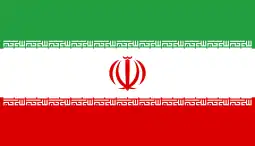 Vice President of Iran Mostafa Mir-Salim
Vice President of Iran Mostafa Mir-Salim.svg.png.webp) Vice President of Iraq Taha Muhie-eldin Marouf
Vice President of Iraq Taha Muhie-eldin Marouf Vice-President Teatao Teannaki
Vice-President Teatao Teannaki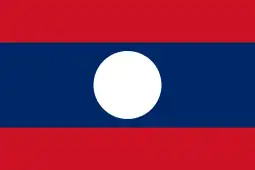 Vice President of Laos Phoun Sipaseut
Vice President of Laos Phoun Sipaseut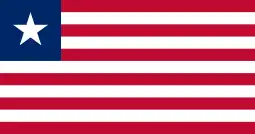 Vice-President Harry F. Moniba
Vice-President Harry F. Moniba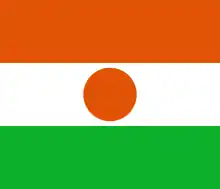 Prime Minister Mamane Oumarou
Prime Minister Mamane Oumarou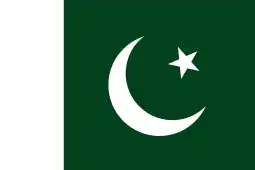 Prime Minister of Pakistan Benazir Bhutto
Prime Minister of Pakistan Benazir Bhutto Vice President of Poland Kazimierz Barcikowski
Vice President of Poland Kazimierz Barcikowski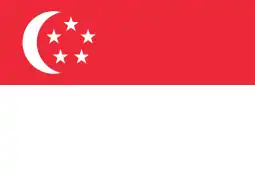 Prime Minister of Singapore Lee Kuan Yew
Prime Minister of Singapore Lee Kuan Yew.svg.png.webp) Prime Minister of South Korea Kang Young Hoon
Prime Minister of South Korea Kang Young Hoon Prime Minister Felipe Gonzalez
Prime Minister Felipe Gonzalez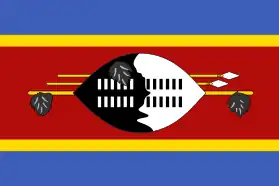 Prime Minister Sotsha E. Dlamini
Prime Minister Sotsha E. Dlamini Prime Minister Carl Bildt
Prime Minister Carl Bildt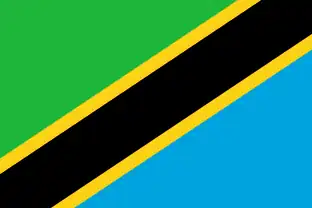 Prime Minister and First Vice President Joseph Sinde Warioba
Prime Minister and First Vice President Joseph Sinde Warioba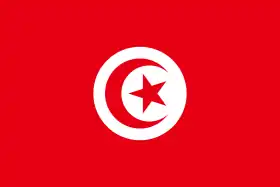 Prime Minister of Tunisia Hedi Baccouche
Prime Minister of Tunisia Hedi Baccouche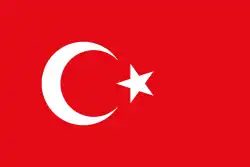 Prime Minister of Turkey Turgut Özal
Prime Minister of Turkey Turgut Özal Prime Minister Margaret Thatcher
Prime Minister Margaret Thatcher.svg.png.webp) Vice President of the Presidency of Yugoslavia Stane Dolanc
Vice President of the Presidency of Yugoslavia Stane Dolanc
Minister/International Represents of Foreign Affairs
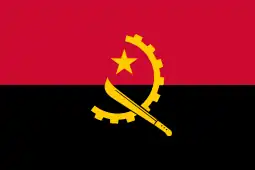 Minister of External Relations Pedro de Castro Van Dunen
Minister of External Relations Pedro de Castro Van Dunen.svg.png.webp) Minister of External Relations Leo Tindemans
Minister of External Relations Leo Tindemans.svg.png.webp) Deputy Vice-Minister of Ministry of Foreign Affairs Mary Carrasco Monje
Deputy Vice-Minister of Ministry of Foreign Affairs Mary Carrasco Monje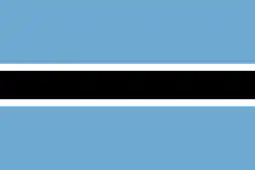 Minister of External Affairs Gaositwe K.T. Chiepe
Minister of External Affairs Gaositwe K.T. Chiepe.svg.png.webp) Minister of External Relations Roberto de Abreu Sodre
Minister of External Relations Roberto de Abreu Sodre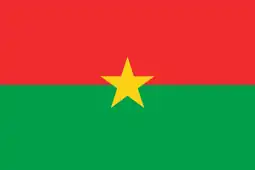 Minister of External Relations Jean Marc Palm
Minister of External Relations Jean Marc Palm Minister of Foreign Affairs Silvino Manuel Da Luz
Minister of Foreign Affairs Silvino Manuel Da Luz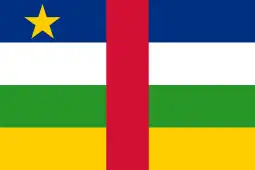 Minister of Foreign Affairs Michel Gbezera-Bria
Minister of Foreign Affairs Michel Gbezera-Bria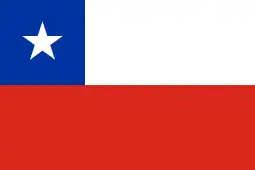 Minister of Foreign Affairs Hernan Felipe Errazuriz
Minister of Foreign Affairs Hernan Felipe Errazuriz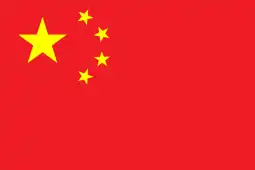 Minister of Foreign Affairs of the People's Republic of China Qian Qichen
Minister of Foreign Affairs of the People's Republic of China Qian Qichen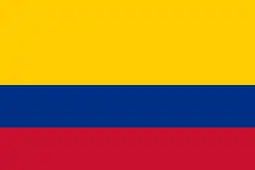 Deputy Minister for Foreign Relations Esther Lozano de Ray
Deputy Minister for Foreign Relations Esther Lozano de Ray.svg.png.webp) Minister of Foreign Affairs, Cooperation and Trade Said Kafe
Minister of Foreign Affairs, Cooperation and Trade Said Kafe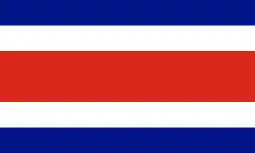 Minister of Foreign Affairs and Worship Rodrigo Madrigal Nieto
Minister of Foreign Affairs and Worship Rodrigo Madrigal Nieto Minister of Foreign Affairs Ricardo Acevedo Peralta
Minister of Foreign Affairs Ricardo Acevedo Peralta Minister of Foreign Affairs Roland Dumas
Minister of Foreign Affairs Roland Dumas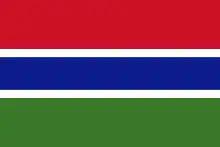 Minister of External Affairs Alhaji Omar B. Sey
Minister of External Affairs Alhaji Omar B. Sey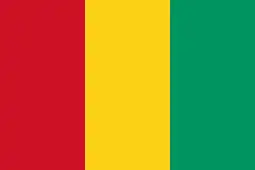 Minister of Foreign Affairs The Chief of Battalion Jean Traore
Minister of Foreign Affairs The Chief of Battalion Jean Traore Deputy Minister for Foreign Affairs Gabor Nagy
Deputy Minister for Foreign Affairs Gabor Nagy Minister of External Affairs P.V. Narasimha Rao
Minister of External Affairs P.V. Narasimha Rao.svg.png.webp) Deputy Minister of Foreign Affairs Wisam Al-Zahawi
Deputy Minister of Foreign Affairs Wisam Al-Zahawi Under-Secretary of State for Foreign Affairs Gilberto Bonalumi
Under-Secretary of State for Foreign Affairs Gilberto Bonalumi Vice-Chairman of the Council of Ministers and Minister of Foreign Affairs Phoune Sipaseuth
Vice-Chairman of the Council of Ministers and Minister of Foreign Affairs Phoune Sipaseuth Vice-Minister of Foreign Affairs Soubanh Srithirath
Vice-Minister of Foreign Affairs Soubanh Srithirath Secretary of State for Foreign Affairs Robert Goebbels
Secretary of State for Foreign Affairs Robert Goebbels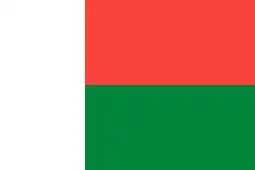 Minister of Foreign Affairs Jean Bemananjara
Minister of Foreign Affairs Jean Bemananjara Minister of Foreign Affairs Dato' Abu Hassan bin Haji Omar
Minister of Foreign Affairs Dato' Abu Hassan bin Haji Omar Minister of Foreign Affairs Fathulla Jameel
Minister of Foreign Affairs Fathulla Jameel Private Secretary to the Minister of Foreign Affairs Adrian Camilleri
Private Secretary to the Minister of Foreign Affairs Adrian Camilleri Minister of Foreign Affairs Torn Kijiner
Minister of Foreign Affairs Torn Kijiner.svg.png.webp) Minister of Foreign Affairs and Cooperation Mohamed Sidina Ould Sidiya
Minister of Foreign Affairs and Cooperation Mohamed Sidina Ould Sidiya Minister of Foreign Affairs and Cooperation Abdellatif Filali
Minister of Foreign Affairs and Cooperation Abdellatif Filali Minister of External Affairs Ike Nwachukwu
Minister of External Affairs Ike Nwachukwu Minister of Foreign Affairs Thorvald Stoltenberg
Minister of Foreign Affairs Thorvald Stoltenberg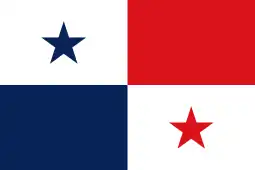 Minister of Foreign Affairs Jorge Eduardo Ritter
Minister of Foreign Affairs Jorge Eduardo Ritter Minister of External Affairs Luis Maria Argana
Minister of External Affairs Luis Maria Argana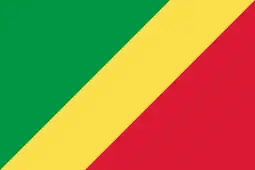 Minister of Foreign Affairs and Cooperation Antoine Ndinga-Oba
Minister of Foreign Affairs and Cooperation Antoine Ndinga-Oba.svg.png.webp) Deputy Director of the Fourth Direction of the Ministry of Foreign Affairs Ioan Gorita
Deputy Director of the Fourth Direction of the Ministry of Foreign Affairs Ioan Gorita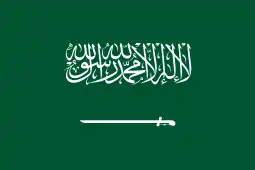 Deputy Minister for Foreign Affairs Abdulrahman Mansouri
Deputy Minister for Foreign Affairs Abdulrahman Mansouri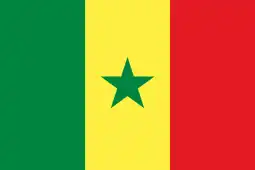 Minister of Foreign Affairs Ibrahima Fall
Minister of Foreign Affairs Ibrahima Fall Minister of Foreign Affairs Abdul Karim Koroma
Minister of Foreign Affairs Abdul Karim Koroma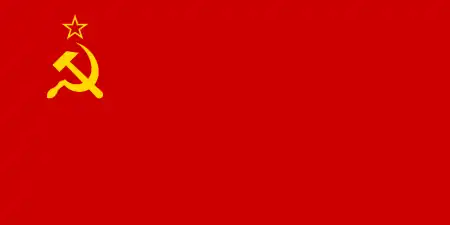 Deputy Minister for Foreign Affairs Rogachev Igorj Alekseevich
Deputy Minister for Foreign Affairs Rogachev Igorj Alekseevich Secretary of State James A. Baker III
Secretary of State James A. Baker III Minister of Foreign Affairs Enrique Tejera Paris
Minister of Foreign Affairs Enrique Tejera Paris
Ambassador
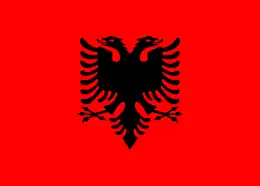 Ambassador Justin Papajorgji
Ambassador Justin Papajorgji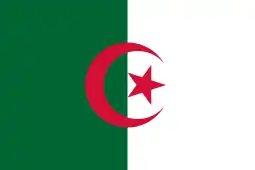 Ambassador Noureddine Yazid Zerhouni
Ambassador Noureddine Yazid Zerhouni Ambassadress and Director of Asia and Oceania Department, Ministry of External Relations Maria de Jesus Haller
Ambassadress and Director of Asia and Oceania Department, Ministry of External Relations Maria de Jesus Haller Ambassador Hedayetul Huq
Ambassador Hedayetul Huq.svg.png.webp) Ambassador Patrick Nothomb
Ambassador Patrick Nothomb Ambassador Atlay Digby Morales
Ambassador Atlay Digby Morales Ambassador Dasho Karma Letho
Ambassador Dasho Karma Letho.svg.png.webp) Ambassador Arnold Hofman-Bang Soleto
Ambassador Arnold Hofman-Bang Soleto.svg.png.webp) Ambassador Carlos Antonio Bettencourt Bueno
Ambassador Carlos Antonio Bettencourt Bueno Ambassador Pengiran Dato Paduka Haji Idriss
Ambassador Pengiran Dato Paduka Haji Idriss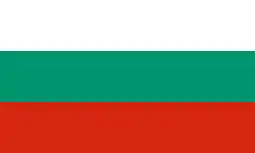 wife of Ambassador Peter Bashikarov
wife of Ambassador Peter Bashikarov Ambassador Hama Arba Diallo
Ambassador Hama Arba Diallo.svg.png.webp) Ambassador Ba Thwin
Ambassador Ba Thwin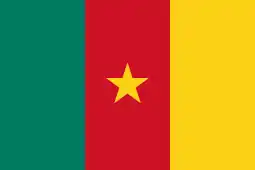 Ambassador Etienne Ntsama
Ambassador Etienne Ntsama.svg.png.webp) Ambassador Barry Connell Steers
Ambassador Barry Connell Steers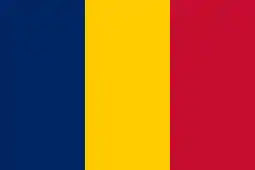 Ambassador Issa Abbas Ali
Ambassador Issa Abbas Ali Ambassador Gustavo Ponce Lerou
Ambassador Gustavo Ponce Lerou Ambassador Yang Zhenya
Ambassador Yang Zhenya Ambassador Fidel Duque Ramirez
Ambassador Fidel Duque Ramirez Ambassador Amadeo Blanco Valdes-Fauly
Ambassador Amadeo Blanco Valdes-Fauly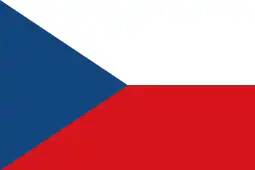 Ambassador Rudolf Jakubik
Ambassador Rudolf Jakubik Ambassador William Thune Andersen
Ambassador William Thune Andersen Ambassador Rachad Ahmed Saleh Farah
Ambassador Rachad Ahmed Saleh Farah Ambassador Alfonso Canto Dinzey
Ambassador Alfonso Canto Dinzey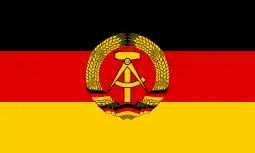 Ambassador Manfred Schmidt
Ambassador Manfred Schmidt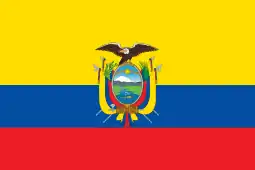 Ambassador Marcelo Avila Orejuela
Ambassador Marcelo Avila Orejuela Ambassador Wahib Fahmy El-Miniawy
Ambassador Wahib Fahmy El-Miniawy Ambassador Ernesto Arrieta Peralta
Ambassador Ernesto Arrieta Peralta Ambassador Worku Moges
Ambassador Worku Moges Ambassador Charles Walker
Ambassador Charles Walker Ambassador Pauli S. Opas
Ambassador Pauli S. Opas Ambassador Bernard Dorin
Ambassador Bernard Dorin Ambassador James Leslie Mayne Amissah
Ambassador James Leslie Mayne Amissah Ambassador George Lianis
Ambassador George Lianis Ambassador El Hadj Boubacar Barry
Ambassador El Hadj Boubacar Barry Ambassador Anibal Enrique Quinomez Abarca
Ambassador Anibal Enrique Quinomez Abarca Ambassador Andras Forgacs
Ambassador Andras Forgacs Ambassador Arjun Gobindram Asrani
Ambassador Arjun Gobindram Asrani Ambassador Seyed Mohammad Hossein Adeli
Ambassador Seyed Mohammad Hossein Adeli.svg.png.webp) Ambassador Rashid M.S. Al-Rifai
Ambassador Rashid M.S. Al-Rifai Ambassador Sean G. Ronan
Ambassador Sean G. Ronan Ambassador Nahum Eshkol
Ambassador Nahum Eshkol Ambassador Bartolomeo Attolico
Ambassador Bartolomeo Attolico Ambassador Pierre Nelson Coffi
Ambassador Pierre Nelson Coffi Ambassador Khaled Madadha
Ambassador Khaled Madadha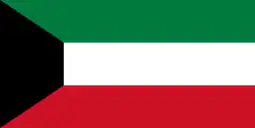 Ambassador Abdul-Aziz Abdullatif Al-Sharekh
Ambassador Abdul-Aziz Abdullatif Al-Sharekh Ambassador Souphanthaheuangsi Sisaleumsak
Ambassador Souphanthaheuangsi Sisaleumsak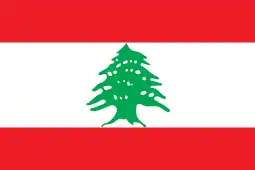 Ambassador Amir El-Khoury
Ambassador Amir El-Khoury.svg.png.webp) Ambassador T.B. Moeketsi
Ambassador T.B. Moeketsi Ambassador Stephen J. Koffa
Ambassador Stephen J. Koffa Ambassador Jean-Louis Wolzfeld
Ambassador Jean-Louis Wolzfeld Ambassador Hubert Maxime Rajaobelina
Ambassador Hubert Maxime Rajaobelina Ambassador Dato' J.A. Kamil
Ambassador Dato' J.A. Kamil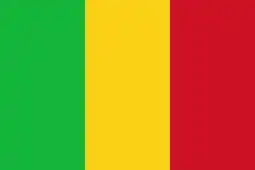 Ambassador Abdoulaye Amadou Sy
Ambassador Abdoulaye Amadou Sy Ambassador J. Gauci
Ambassador J. Gauci.svg.png.webp) Ambassador Taki Ould Sidi
Ambassador Taki Ould Sidi.svg.png.webp) Ambassador-Director of the Asia and Middle East Department, Ministry of Foreign Affairs and Cooperation Moctar Ould Haye
Ambassador-Director of the Asia and Middle East Department, Ministry of Foreign Affairs and Cooperation Moctar Ould Haye.svg.png.webp) Ambassador Buyantyn. Dashtseren
Ambassador Buyantyn. Dashtseren Ambassador Abdelaziz Benjelloun
Ambassador Abdelaziz Benjelloun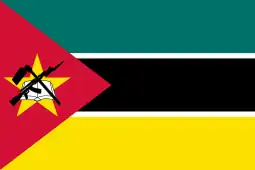 Ambassador Lopes Tembe Ndelana
Ambassador Lopes Tembe Ndelana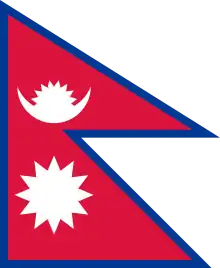 Ambassador Narayan Prasad Arjal
Ambassador Narayan Prasad Arjal Ambassador Herman Ch. Posthumus Meyjes
Ambassador Herman Ch. Posthumus Meyjes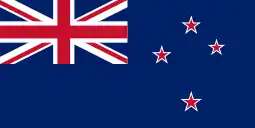 Ambassador Rodney James Gates
Ambassador Rodney James Gates Ambassador Jorge Huezo Castrillo
Ambassador Jorge Huezo Castrillo Ambassador Mai-Bukar Garba Dogon-Yaro
Ambassador Mai-Bukar Garba Dogon-Yaro Ambassador Hakon W. Freihow
Ambassador Hakon W. Freihow.svg.png.webp) Ambassador Dawood bin Hamdan bin Abdulla Al-Hamdan,
Ambassador Dawood bin Hamdan bin Abdulla Al-Hamdan, Ambassador Mansur Ahmad
Ambassador Mansur Ahmad Ambassador Alberto A. Calvo Ponce
Ambassador Alberto A. Calvo Ponce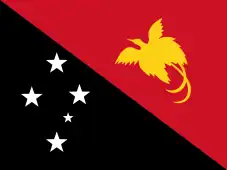 Ambassador Joseph Kaal Nombri
Ambassador Joseph Kaal Nombri Ambassador Juan Carlos Hrase Von Bargen
Ambassador Juan Carlos Hrase Von Bargen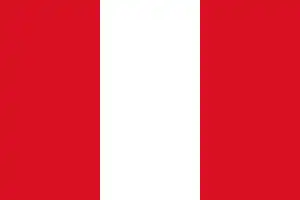 Ambassador Luis J. Macchiavello Amoros
Ambassador Luis J. Macchiavello Amoros.svg.png.webp) Ambassador Ramon V. del Rosario
Ambassador Ramon V. del Rosario Ambassador Ryszard Frackiewicz
Ambassador Ryszard Frackiewicz Ambassador Jose Eduardo Mello Gouveia
Ambassador Jose Eduardo Mello Gouveia Ambassador Mohammed Ali Al-Ansari
Ambassador Mohammed Ali Al-Ansari.svg.png.webp) Ambassador Constantin Vlad
Ambassador Constantin Vlad.svg.png.webp) Ambassador Joseph Nizeyimana
Ambassador Joseph Nizeyimana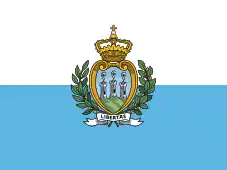 Ambassador Manlio Cadelo
Ambassador Manlio Cadelo Ambassador Fawzi Bin Abdul Majeed Shobokshi
Ambassador Fawzi Bin Abdul Majeed Shobokshi Ambassador Keba Birane Cisse
Ambassador Keba Birane Cisse Ambassador Sheku Badara Basiru Dumbuya
Ambassador Sheku Badara Basiru Dumbuya Ambassador Cheng Tong Fatt
Ambassador Cheng Tong Fatt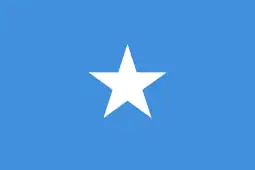 Ambassador Hassan Abshir Farah
Ambassador Hassan Abshir Farah.svg.png.webp) Ambassador Lee Won-Kyung
Ambassador Lee Won-Kyung Ambassador Solovjev Nikolai Nikolaevich
Ambassador Solovjev Nikolai Nikolaevich Ambassador Camilo Barcia Garcia-Villamil
Ambassador Camilo Barcia Garcia-Villamil Ambassador Karunasena Kodituwakku
Ambassador Karunasena Kodituwakku Ambassador Mohammed Abdel Dayim Basheer
Ambassador Mohammed Abdel Dayim Basheer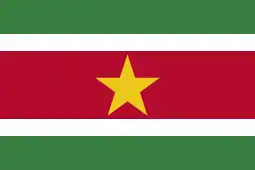 Ambassador to the Netherlands Cyrill Ramkisoor
Ambassador to the Netherlands Cyrill Ramkisoor Ambassador Ove F. Heyman
Ambassador Ove F. Heyman.svg.png.webp) Ambassador Roger Bar
Ambassador Roger Bar Ambassador Ali Said Mchumo
Ambassador Ali Said Mchumo Ambassador Birabhongse Kasemsri
Ambassador Birabhongse Kasemsri Ambassador Yao Bloua Agbo
Ambassador Yao Bloua Agbo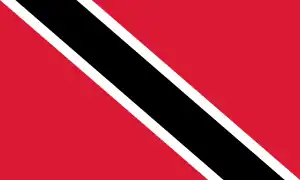 Ambassador to India Premchand J. Dass
Ambassador to India Premchand J. Dass Ambassador Abdelhamid Ben Messaouda, Ambassador
Ambassador Abdelhamid Ben Messaouda, Ambassador Ambassador Umut Arık
Ambassador Umut Arık Ambassador William Wycliffe Rwetsiba
Ambassador William Wycliffe Rwetsiba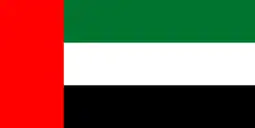 Ambassador Hamad Salem Al-Maqami
Ambassador Hamad Salem Al-Maqami Ambassador John Whitehead and Lady Whitehead
Ambassador John Whitehead and Lady Whitehead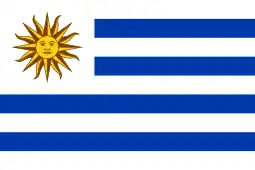 Ambassador Alfredo Giro Pintos
Ambassador Alfredo Giro Pintos Ambassador Fernando Baez-Duarte
Ambassador Fernando Baez-Duarte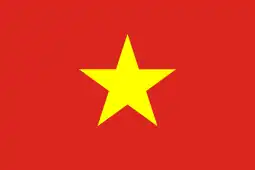 Ambassador Vo Van Sung
Ambassador Vo Van Sung Ambassador Hans-Joachim Hallier
Ambassador Hans-Joachim Hallier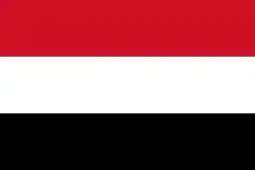 Ambassador Mohamed Abdul Koddos Alwazir
Ambassador Mohamed Abdul Koddos Alwazir.svg.png.webp) Ambassador Tarik Ajanovic
Ambassador Tarik Ajanovic.svg.png.webp) Ambassador Murairi Mitima Kaneno
Ambassador Murairi Mitima Kaneno.svg.png.webp) Ambassador Boniface Salimu Zulu
Ambassador Boniface Salimu Zulu
Representatives
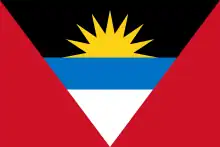 Representative of Saint Vincent and the Grenadines
Representative of Saint Vincent and the Grenadines Personal Representative of the President Bukarii Mahamadu Gabriel
Personal Representative of the President Bukarii Mahamadu Gabriel.svg.png.webp) Personal Representative Prince Norodom Ranariddh
Personal Representative Prince Norodom Ranariddh Vice-President of Council of Ministers and Minister of Education José Ramón
Vice-President of Council of Ministers and Minister of Education José Ramón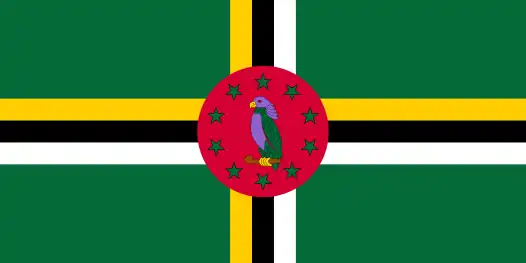 Represented by the Representative of Saint Vincent and the Grenadines
Represented by the Representative of Saint Vincent and the Grenadines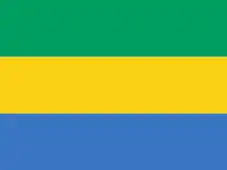 Personal Representative of the President Ali Ben Bongo
Personal Representative of the President Ali Ben Bongo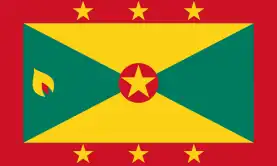 Represented by the Representative of Saint Vincent and the Grenadines
Represented by the Representative of Saint Vincent and the Grenadines.svg.png.webp) Personal Representative of H.M. the Sultan Sayyid Thuwaini bin Shihab Al-Busaidi
Personal Representative of H.M. the Sultan Sayyid Thuwaini bin Shihab Al-Busaidi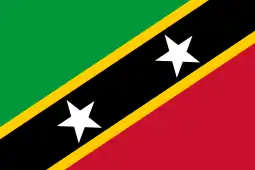 Represented by the Representative of Saint Vincent and the Grenadines
Represented by the Representative of Saint Vincent and the Grenadines Represented by the Representative of Saint Vincent and the Grenadines
Represented by the Representative of Saint Vincent and the Grenadines.svg.png.webp) Personal Secretary for the Federal Councillor Pierre Combernous
Personal Secretary for the Federal Councillor Pierre Combernous
Pardons
To mark the funeral, the government pardoned 30,000 people convicted of minor criminal offenses. The pardons also allowed an additional 11 million people to recover such civil rights as the right to vote and run for public office, which they had lost as a punishment for offenses.[2]
Protests
The late emperor's funeral, like the man it honored, was dogged by bitter memories of the past. Many Allied veterans of World War II regarded Emperor Shōwa as a war criminal and called upon their countries to boycott the funeral.[6] Nevertheless, of the 166 foreign states invited to send representatives, all but three accepted.[8] Some Japanese, including a small Christian community, constitutional scholars and opposition politicians, denounced the pomp at the funeral as a return to past exaltation of the emperor and contended that the inclusion of Shinto rites violated Japan's post-war separation of church and state. Some groups, opposed to the Japanese monarchy, also staged small protests.[3]
The Shinto rites, witnessed by official funeral guests and held at the same site as the state-sponsored portion of the funeral, prompted criticism that the Government was violating the constitutional separation of state and religion. This separation is especially important in Japan because Shinto was used as the religious basis for the ultra-nationalism and militaristic expansion of wartime Japan. Some opposition party delegates to the funeral boycotted that part of the ceremony.[3] During the funeral procession in Tokyo, a man stepped into the street as the cortege approached. He was quickly apprehended by police who hustled him away.[2] At 1:55 pm, half an hour before the hearse carrying the late emperor's casket passed by, policemen patrolling the highway leading to the Musashi Imperial Graveyard heard an explosion and found debris scattered along the highway. They quickly cleared away the rubble, and the hearse passed without incident. In total, the police also arrested four people, two for trying to disrupt the procession.[3]
See also
References
- ↑ "Hirohito's survivors". Archived from the original on 22 December 2015. Retrieved 13 October 2015.
- 1 2 3 4 5 6 7 8 9 10 11 12 13 14 15 16 17 Ronald E. Yates, World Leaders Bid Hirohito Farewell, Chicago Tribune, 24 February 1989 (online) Archived 17 November 2015 at the Wayback Machine, accessed 13 Oct 2015
- 1 2 3 4 5 6 7 8 9 10 11 12 13 14 15 16 17 18 Susan Chira, With Pomp and on a Global Stage, Japanese Bury Emperor Hirohito, The New York Times, 24 February 1989 (online) Archived 8 March 2016 at the Wayback Machine, accessed 13 Oct 2015
- ↑ Attali, Jacques, 1995, Verbatim, Volume 3, Fayard
- ↑ "Paying Respects: A Global Roll-Call". The New York Times. 24 February 1989. Archived from the original on 8 April 2022. Retrieved 1 September 2016.
- 1 2 Slavin, Stewart (20 February 1989). "Attending Hirohito funeral a touchy issue". UPI. United Press International. Archived from the original on 2 September 2016. Retrieved 2 September 2016.
- ↑ Meredith, Martin. The Fate of Africa: A History of the Continent Since Independence (Revised and Updated), p. 308.
- ↑ Schoenberger, Karl (24 February 1989). "World Leaders Pay Respects at Hirohito Rites". Los Angeles Times. Archived from the original on 15 April 2021.